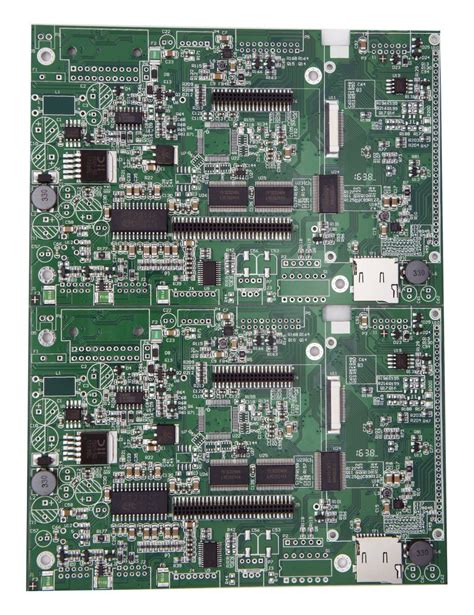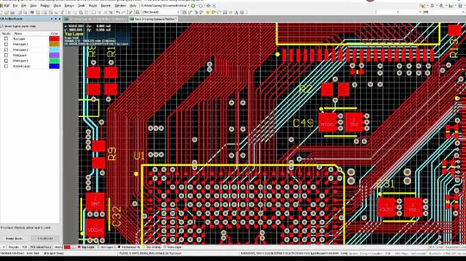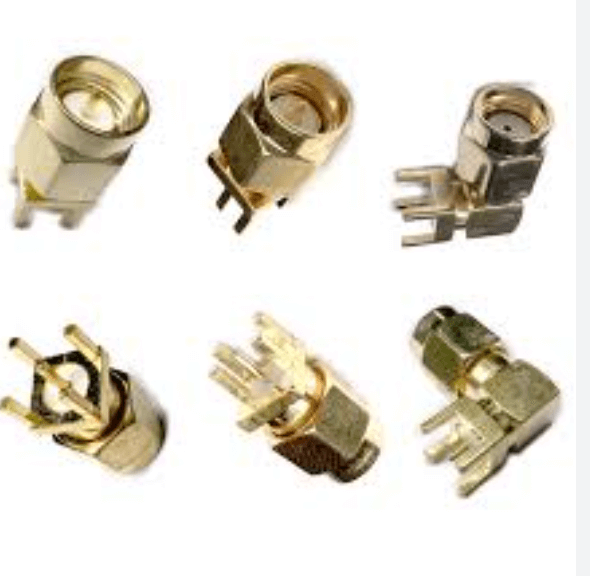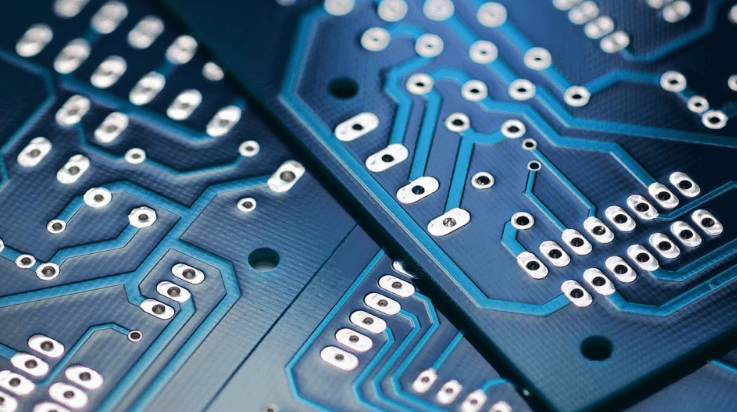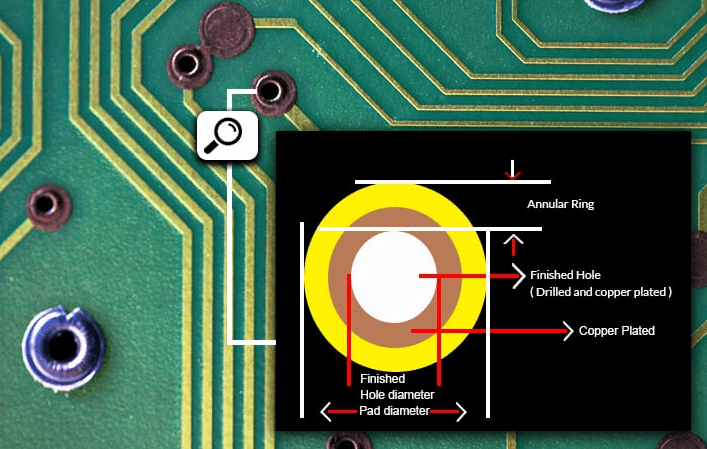Flexible CCL Application Note
First, protective coating of flexible copper clad laminate
The protective cover is a permanent insulating film or a coating covering the conductor side of the flexible printed circuit (of course, no protective coating is required at the pad). This protective coating prevents the circuit from moisture, contamination and Other forms of damage, at the same time, can also reduce the conductor’s unfavorable stress during deflection. Several different types of protective coatings are evaluated and compared below.
(1) Cover Film Cover film is a material composed of a rubberized insulating film.
The cover film can be pre-drilled or punched according to the structure of the circuit board. Under pressure and heat, the protection film can be positioned to cover the track. In a flexible printed circuit board, the thickness of the dielectric substrate in the cover film should be approximately the same as or slightly thinner than the thickness of the dielectric material in the substrate, and the thickness of the adhesive layer is also approximately the same as the thickness of the covered metal foil or Slightly thinner to reduce conductor stress during flexing.
The most typical and most commonly used cover film structure is a polyester film coated with a polyester resin, a polyimide film coated with an acrylic adhesive or an epoxy adhesive. The cover film is most commonly used in the form of a single side, and a double-sided adhesive cover film is also used when manufacturing a multilayer flexible circuit board.
(2) Liquid paint protection layer The liquid paint protection layer is generally made of polyester glue or liquid polyester.
The material is screen printed onto a circuit board (exposure pad) and cured by infrared (IR) or ultraviolet (UV) light to form a permanent, thin and hard-to-wear layer. Protective coating. Acrylic-epoxy, acrylic polyurethane and thiol resins can also be used as protective coatings for flexible circuits. Synthetic rubbers with good electrical insulation, such as silicone rubber, polyurethane rubber, and butyl rubber, cannot be widely used in flexible circuit boards because they stretch and deform during operation.
(3) Dry-film photo-shielding layer A dry-film photo-resist layer is a method that can be made into a shape of a cover film by a photo process.
The film is mounted on a paper substrate and laminated to a etched flexible printed circuit board using heat, pressure, and vacuum to achieve a tight, uniform seal. Then, except that the solder holes or other unprotected surfaces are not exposed, they are exposed to light through the photographic film, and the film is cured on the photographic exposed surface to form a cover layer.
(4) Liquid photo-shielding layer The liquid photo-shielding layer is a series of pure and homogenous sealing layers on the etched flexible printed circuit by means of a series, rod or spray forming method. Afterwards, heating or dry film is used. The same process as the shield cures.
Second, the general conditions that flexible circuit design should consider
The most basic conditions to consider when designing a flexible printed circuit board are:
1 The characteristics of the circuit board’s mechanical and electrical properties meet the application needs;
2 Reliability The characteristics of the circuit board can be maintained in accordance with the scope of application;
3 Cost The cost of the circuit board is effectively compared with the method and circuit design that can be used to manufacture the circuit board, and how to make the cost of the flexible circuit board the lowest.
The use of flexible materials means that the final part should be flexible, folded or rolled in operation.
1. Dimensional stability
Flexible dielectric materials tend to expand or shrink during processing, and these dimensional change rates are greater than the dimensional change rates of rigid materials that we understand. The design should be aware of this rate of dimensional change and allow greater tolerances during space design and component installation. In the usual case, the flexible material contracts in the machine direction and slightly expands in the cross-sectional direction. For polyacrylonitrile films, the general dimensional change in the machine direction should be 0.2%. The use of tolerances beyond the face of the circuit board is preferable to the tolerance selection of the entire circuit. The choice of tolerance affects the output and cost of the product.
The wire layout should be adjusted within the allowable dimensional changes and should be designed to work closely with the material supplier in order to take advantage of the appropriate dimensional characteristics.
2. Flexible CCL Flexibility
The interconnection application of flexible materials is considered as a combination of dynamic applications and static applications. The interconnection of flexible materials in static applications can be assembled as curved or folded as required. Most static applications use larger wire widths and can use EDHD copper coupons, while the dielectric substrate material is also slightly thicker. In dynamic applications, the interconnection of flexible materials requires deflection and movement on a continuous and intermittent substrate. The trace pattern of the copper foil should be the minimum allowable thickness and the trace pattern should be mounted on the natural axis of the composite laminate to ensure maximum flex life. The copper foil conductors should be free of cracks, pinholes or notch edges that can reduce the flex life of the part.
Connections for flexible materials in dynamic applications typically use thinner polyester films or a combination of polyimide film and calendered (RA) copper foil. A protective cover film of the same thickness as the base dielectric material also requires positioning of the copper foil on the natural central axis.
If flexing is required, the copper foil and the dielectric substrate should have sufficient elongation to prevent the conductor or insulating material from cracking. For the copper foil to achieve the best flex durability, it is only compressed without being pulled. Stretch prevents copper foil fatigue hardening.
3. Flexible CCL Features Requirements
(1) Electrical performance characteristics are the first considerations in design. In general, the dielectric properties of the polyepoxy film are better than the dielectric properties of the polyacetal film. At the same time, the dielectric properties are also related to the arrangement of the conductors, the dimensions and the geometric dimensions of the conductors and the dielectric matrix.
(2)Flexibility is the most important mechanical property for flexible printed circuit boards. Flexibility requirements, overall size and shape, and conductors required for dynamic applications (those that include continuous and intermittent lines) or static applications (those that require motion only during installation and operation) can be applied. Placement and other factors to select the line material.
(3) Environmental characteristics also affect the choice of circuit materials. Designers should consider the maximum temperature, humidity, and exposure of the flexible circuit to the corrosive chemical medium. Whether insulation and conductor materials can maintain their original functional characteristics in these environmental conditions.
Third, the cost of flexible copper clad laminates
When comparing flexible printed circuit boards and circuit boards of other methods, not only the manufacturing cost of the flexible circuit boards, but also the cost of direct processing of non-circuit boards and the lifespan of interconnected products are considered. The possible cost is more important. This part includes equipment, inspection, processing, engineering quality, insurance, management, on-site operation and repair.
Compared to conventional point-to-point lines, flexible material lines have a higher initial cost and significantly lower post-maintenance costs.
The assembly of flexible printed circuits has the advantages of reducing the number of end points, solder joints and eliminating errors due to repetitive work. For a large number of electronic connectors and high density, the use of flexible printed wiring can greatly save materials. Depending on the number of conductors, the duration of maintenance and the number of circuit devices used, the total savings of flexible printed circuits compared to conventional lines can be in the range of 20% -50%.
When the performance requirements of an application are determined, the corresponding flexible circuit material can be selected. The material components are selected first, based on their corresponding properties, and then the structural specifications of these material components are determined. Accurately telling material manufacturers that their performance requirements for material applications are important, materials that exceed the specification characteristics will increase unnecessary production costs without increasing their value.

